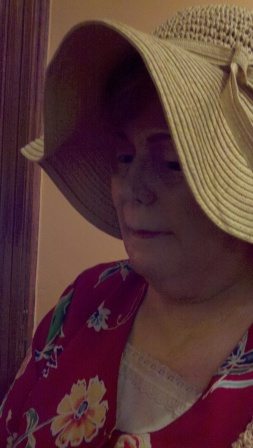The Professor Takes On Creating Fictional Characters
The Professor joins us today to share a few tips on developing well-rounded and layered characters. As in his last tip, Interviewing Your Characters, The Professor once again emphasizes that police investigators have got what it takes to concoct believable fictional characters. Here’s why.
When officers search a suspect’s apartment or a murder victim’s home, they’re not only looking for physical evidence of the crime, they’re also seeking information about killer and/or the current deceased resident. Therefore, they take a good hard look at the possessions in the home. Personal objects tell a vivid story.
While conducting the in-depth search, detectives are essentially reading a visual autobiography. They’ll learn things such as the person’s favorite color, their favorite authors, the extent of their wealth (if any), secrets (a diary or journal), left- or right-handed, natural hair color/non-natural hair color, travels, family history, clothing style and sizes (there may be clothing found that doesn’t belong to the victim, or that belongs to the killer), shoe sizes and brands, etc.
So, The Professor suggests that writers may want to build a list of the personal possessions that belong to the character-in-progress. Doing so will greatly assist authors in developing and building a character’s personality, and how and why the character goes about his/her daily affairs.
Lets say you’re developing a female protagonist, a woman who’s known for her superb crime-solving abilities. You might want the reader to see the sleuth’s home as a place crammed full of mystery novels and forensics manuals, magnifying glasses of assorted sizes, and a fully-functional DNA lab in the basement. However, her most prized-possessions are a large assortment of big, floppy straw hats.
As the readers step into your character’s kitchen they glance around, taking in the overall scene. On the laminate counter top, next to a shiny, Empire red KitchenAid artisan stand mixer, are two unopened bottles of an “As Seen On TV” weight loss product. (“But, wait! For the low, low price of $19.99 you’ll receive a second bottle of Lard-Ass-Be-Gone absolutely free, if you order within the next two seconds.”). Did the murder victim struggle with weight issues?
The pantry shelves are home to neat rows of canned goods, one non-stick pot, one glass baking dish, two plain white plates, two diner-style coffee mugs (Cafe DuMonde), two bowls, two glasses featuring scenery from Graceland, instant potatoes, 90 second rice, boxed soups of various flavors, and an assortment of tea blends from all over the world. Everything is arranged by size and species and they’d been placed in alphabetical order with all labels facing forward.
The kitchen is spotless. Like the rest of the house, not a thing is out of place. You couldn’t find a dust bunny if you tried.
A tour of the victim’s bedroom closet exposes only comfortable, flat shoes in shades of browns or black, and nine floral-print dresses in various hues of red. Her medicine cabinet contains denture cream, Ibuprofen, and partially-used container of Clairol age-defying dark-brown hair dye.
Have you started to develop a mental picture of the character yet? Do you have some sort of idea of her mannerisms? If you close your eyes are you beginning to see someone who maybe looks a little like this…
Now that we have an outline of our character, and we know a bit of her personality (she’s a neat freak who prefers comfort over style, and she loves, loves, loves, tea), we can start to add some color between the lines. To do so, writers should take a look at their character’s possessions and then ask why they possess each of those items.
The denture cream. Does she own it because she actually has dentures, or is there a gentleman caller with detachable upper and lower plates who often spends the night? How about the assortment of exotic teas? Does she drink the stuff, or is she merely an eccentric collector? Are the tea packets souvenirs from extensive travel? Maybe her gentleman caller is an airline pilot who picks up the various blends during his extensive travels.
So, you see, building a character can be fun. All you have to do is unlock your imaginations and go where your warped little writer-minds take you.
After all, there are countless characters out there who’re on standby, waiting for an invitation to step into your stories.





